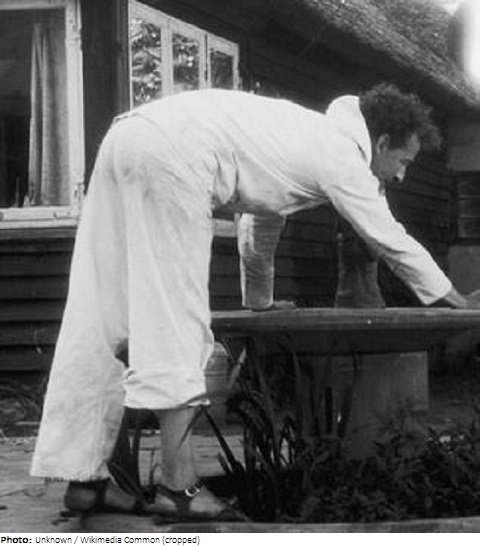
| Roles | Competed in Olympic Games |
|---|---|
| Sex | Male |
| Full name | Carl Hugo•Liisberg |
| Used name | Hugo•Liisberg |
| Born | 23 July 1896 in København (Copenhagen), Hovedstaden (DEN) |
| Died | 12 April 1958 (aged 61 years 8 months 20 days) in Hillerød, Hovedstaden (DEN) |
| NOC |  Denmark Denmark |
Danish sculptor Hugo Liisberg came from a family of artists. He was the son of porcelain painter Carl Frederik Liisberg and Selma Amalia Möllenborg, daughter of the painters Julius Paulsen and Esther Lange. He was initially trained in the Royal Porcelain Factory and also worked there temporarily. In 1920 he visited the Antoine Bourdelles School in Paris where he studied at the museums and later studied in Italy and then lived in Tibirke Lunde on the island of Sjælland. Over time he came into contact with various artist groups in Denmark and Sweden. In 1932 he went on a Mediterranean trip with a scholarship. Afterwards he worked mainly together with ceramist Nathalie Krebs (1895-1978).
Hugo Liisberg worked primarily with animal sculptures and created several fountains with animal figures, including the famous Sea Horse in the center of Odense and the sea eagle on the Eagle’s Fountain in Silkeborg. He studied the shapes and movements of the animals in the zoo. At the time of his collaboration with Krebs, he concentrated on smaller statuettes made of glazed stoneware and delicate jewelry. In 1942 he was awarded the Eckersberg Medal. Jægeren (The Hunter) was a 96 x 103 cm artificial stone relief that Liisberg created around 1930 for the Institute for the Blind in København.
| Games | Discipline (Sport) / Event | NOC / Team | Pos | Medal | As | |
|---|---|---|---|---|---|---|
| 1932 Summer Olympics | Art Competitions |  DEN DEN |
Hugo Liisberg | |||
| Sculpturing, Medals And Reliefs, Open (Olympic) |